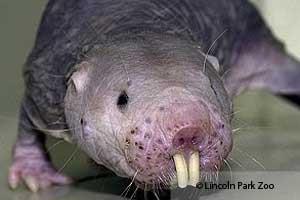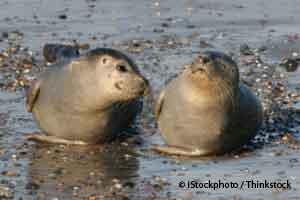For “Mammal Monday”:
How Beavers Build a Lodge
“One of nature's master architects, the beaver is able to create impressive edifices from nothing more that the materials offered by their habitat. Their dams and lodges are not only engineering marvels, but also are able to redefine and shape the creek or river where they choose to take up residence.
Sir David Attenborough narrates this fascinating animal video recording the way in which beavers build a lodge in just 20 days. They'll use their lodge throughout the winter to eat, raise young, and sleep in safety. Includes cute footage of baby beavers. Interesting wildlife video from BBC show 'Beavers: The Master Builder'.”
Read more at http://therainforestsite.greatergood.com/clickToGive/trs/article/How-Beavers-Build-a-Lodge440#tdVR7rvjAmyyFfU4.99
--------
The Beaver - A Moose's Best Friend
“Watch this clip from BBC documentary 'A Moose Name Madeline' to see the strange relationship between the moose and the beaver. Living side by side, these two diverse species have learnt to co-operate and give nature a helping hand along the way.”
________
37 Pictures That Will Restore Your Faith In Pit Bulls
“The Obama administration just came out against specific breed legislation, which is a triumph to many dogs and their loving owners. Here are some pictures that will make you think differently about pit bulls. Remember: “Judge the deed, not the breed!”"
“The AKC sites the breed standard as having “affection for its friends, and children in particular…off-duty quietness and trustworthy stability.” More than that, the ASPCA speaks to their roots as family dogs, given the nickname “nurse’s maid” because of their sweetness with children.”

More at: http://www.buzzfeed.com/chelseamarshall/37-pictures-that-will-restore-your-faith-in-pit-bulls
_______
The Space Shuttle and the Horse's Rear End
“Say friend, did you know that the US Standard railroad gauge (distance between the rails) is 4 feet, 8 1/2 inches.
That's an exceedingly odd number. Why was that gauge used?
Because that's the way they built them in England, and the US railroads were built by English expatriates.
I see, but why did the English build them like that?
Because the first railway lines were built by the same people who built the pre-railroad tramways, and that's the gauge they used.
Well, why did they use that gauge in England?
Because the people who built the tramways used the same jigs and tools that they used for building wagons, which used that wheel spacing.
Okay! Why did their wagons use that odd wheel spacing?
Because, if they tried to use any other spacing the wagon wheels would break on some of the old, long distance roads. Because that's the spacing of the old wheel ruts.
So who built these old rutted roads?
The first long distance roads in Europe were built by Imperial Rome for the benefit of their legions. The Roman roads have been used ever since.
And the ruts?
The original ruts, which everyone else had to match for fear of destroying their wagons, were first made by the wheels of Roman war chariots. Since the chariots were made for or by Imperial Rome they were all alike in the matter of wheel spacing.
Thus, we have the answer to the original question. The United States standard railroad gauge of 4 feet, 8 1/2 inches derives from the original specification for an Imperial Roman army war chariot.
And the motto of the story is Specifications and bureaucracies live forever. ![images[4] images[4]](https://blogger.googleusercontent.com/img/b/R29vZ2xl/AVvXsEhPSqYQ6BgXnGaqS71wBL0R8KNep9QFEyikaq4P4xSXcru9YuhbEievZb8moOSn8XpCQnMW-lKyvqLFD5UerdG_s0PVQLtBXsfRertsVDOU-txnPTU54nKauGAcXT77F__PsvhWuDtTmzDD/?imgmax=800)
So, just what does this have to do with the exploration of space?
Well, there's an interesting extension of the story about railroad gauge and horses' behinds. When we see a Space Shuttle sitting on the launch pad, there are two big booster rockets attached to the sides of the main fuel tank. These are the solid rocket boosters, or SRBs. The SRBs are made by Thiokol at a factory in Utah. The engineers who designed the SRBs might have preferred to make them a bit fatter, but the SRBs had to be shipped by train from the factory to the launch site.
The railroad from the factory runs through a tunnel in the mountains. The SRBs had to fit through that tunnel. The tunnel is slightly wider than a railroad track, and the railroad track is about as wide as two horses' behinds.
So a major design feature of what is arguably the world's most advanced transportation system was originally determined by the width of a horse's ass.” From: http://www.astrodigital.org/space/stshorse.html
A corrected version: http://www.snopes.com/history/american/gauge.asp
_______
Naked Mole Rat May Hold the Key to Dodging Cancer
 “The naked mole rat is a tiny burrowing rodent native to parts of Africa. These little guys are only about four inches long and, as you might guess, hairless.
“The naked mole rat is a tiny burrowing rodent native to parts of Africa. These little guys are only about four inches long and, as you might guess, hairless.
Naked mole rats come equipped with a highly unique set of physical characteristics. These include a lack of pain sensors in the skin, an ability to endure incredibly high levels of carbon dioxide in underground tunnels, a talent for running backwards as fast as they run forwards, an extraordinarily long lifespan, and unlike other mammals … they never get cancer.
Scientists believe it is the “gloop” mole rats produce – a sugar-based natural polymer – that prevents tumors from growing. The gloop, which is actually high-molecular-mass hyaluronan (HMM-HA), is a chemical scientists hope may one day be produced in human tissues.” More at: http://healthypets.mercola.com/sites/healthypets/archive/2013/09/04/naked-mole-rat.aspx and: http://www.nature.com/nature/journal/v499/n7458/full/nature12234.html
_______
Beachgoers to Blame for Seal Pup’s Death
 “Two recent incidents on Rye, New Hampshire beaches have New England Aquarium officials reinforcing warnings to the public about the importance of keeping at least 150 feet away from seals encountered on land.
“Two recent incidents on Rye, New Hampshire beaches have New England Aquarium officials reinforcing warnings to the public about the importance of keeping at least 150 feet away from seals encountered on land.

Marine mammal conservation efforts have been very successful in increasing seal populations, which is why more seals are being sighted on U.S. beaches. It’s important for the safety and health of seals and humans alike that people learn how to behave around seals and abide by the 150-foot rule set forth in the Marine Mammal Protection Act.” More at: http://healthypets.mercola.com/sites/healthypets/archive/2013/09/02/seal-pup-death.aspx
_______
On This Day:
Mayflower departs England, Sep 16, 1620:
“The Mayflower sails from Plymouth, England, bound for the New World with 102 passengers. The ship was headed for Virginia, where the colonists--half religious dissenters and half entrepreneurs--had been authorized to settle by the British crown. However, stormy weather and navigational errors forced the Mayflower off course, and on November 21 the "Pilgrims" reached Massachusetts, where they founded the first permanent European settlement in New England in late December.
Ten years earlier, English persecution had led a group of Separatists to flee to Holland in search of religious freedom. However, many were dissatisfied with economic opportunities in the Netherlands, and under the direction of William Bradford they decided to immigrate to Virginia, where an English colony had been founded at Jamestown in 1607. Some 100 English colonists, dispatched from England by the London Company, had sailed across the Atlantic aboard the Susan Constant, Godspeed, and Discovery.
In a difficult Atlantic crossing, the 90-foot Mayflower encountered rough seas and storms and was blown more than 500 miles off course. Along the way, the settlers formulated and signed the Mayflower Compact, an agreement that bound the signatories into a "civil body politic." Because it established constitutional law and the rule of the majority, the compact is regarded as an important precursor to American democracy. After a 66-day voyage, the ship landed on November 21 on the tip of Cape Cod at what is now Provincetown, Massachusetts.
After coming to anchor in Provincetown harbor, a party of armed men under the command of Captain Myles Standish was sent out to explore the area and find a location suitable for settlement. While they were gone, Susanna White gave birth to a son, Peregrine, aboard the Mayflower. He was the first English child born in New England. In mid-December, the explorers went ashore at a location across Cape Cod Bay where they found cleared fields and plentiful running water and named the site Plymouth.”
______
Settlers race to claim land, Sep 16, 1893:
“On this day in 1893, the largest land run in history begins with more than 100,000 people pouring into the Cherokee Strip of Oklahoma to claim valuable land that had once belonged to Native Americans. With a single shot from a pistol the mad dash began, and land-hungry pioneers on horseback and in carriages raced forward to stake their claims to the best acres.
Ironically, not many years before that same land had once been considered worthless desert. Early explorers of Oklahoma believed that the territory was too arid and treeless for white settlement, but several suggested it might be the perfect place to resettle Indians, whose rich and fertile lands in the southeast were increasingly coveted by Americans. The U.S. government later took this advice and began removing eastern Indian tribes like the Cherokee and Choctaw to Oklahoma Territory in 1817. No more eager than the whites to leave their green and well-watered lands for the arid plains, some Indians resisted and had to be removed by force-most tragically, the 4,000 Cherokee who died during the brutal overland march known appropriately as the "Trail of Tears."
By 1885, a diverse mixture of Native American tribes had been pushed onto reservations in eastern Oklahoma and promised that the land would be theirs "as long as the grass grows and the water runs." Yet even this seemingly marginal land did not long escape the attention of land-hungry Americans. By the late nineteenth century, farmers had developed new methods that suddenly made the formerly reviled Plains hugely valuable. Pressure steadily increased to open the Indian lands to settlement, and in 1889, President Benjamin Harrison succumbed and threw open large areas of unoccupied Indian lands to white settlement. The giant Cherokee Strip rush was only the largest of a series of massive "land runs" that began in the 1890s, with thousands of immigrants stampeding into Oklahoma Territory and establishing towns like Norman and Oklahoma City almost overnight.”
_______
Yesterday:
Jay brought Maddie, the little Yorkie, here for me to groom. So while I was doing that, Ray went around the screen porch posts with a caulking gun filling in different cracks and holes, so it would look better when the porch had it’s final coat of paint.
A local rescue group has saved a sweet, abused pit-bull dog from the Houston pound, and asked if I would foster one of their dogs so they could make room for it.
When they found 















2 comments:
I don't know where you find the time or the patience to include all the things you do in your blog.
Thank you for your comment, Judy.
Sometimes I don't know how, either. I save different news items and include them in the blog. But often that takes ages as I get engrossed in the subject!!
Happy Tails to Emma, and Happy Trails to you both, Penny
Post a Comment